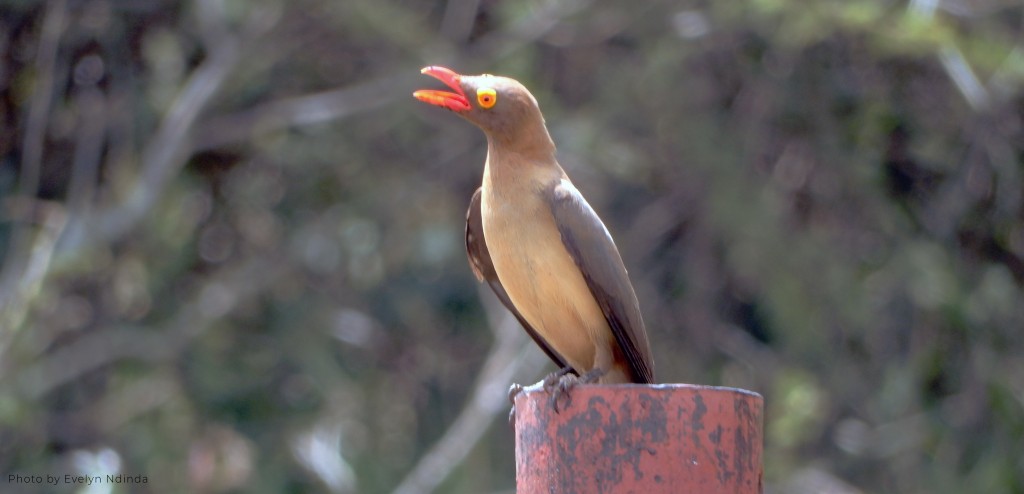In the savannah, most large mammals depend on the services of a common ‘grooming crew,’ the ever-present oxpecker, one of the most commonly sighted birds on our live cameras. On Mpala we have red-billed oxpeckers and yellow-billed oxpeckers. Where both species feed together, the yellow-billed are generally dominant. The birds perch on wild and domestic animals to eat parasites found in the mammalian skin. This is thought to be a symbiotic relationship where both parties benefit. The bird feeds while the animal gets rid of parasites. The oxpeckers habit of perching on cattle, zebras, impalas, hippos and giraffe is often recorded showing them picking out ticks, larvae and small insects. Interestingly though, some animals including the elephant, waterbuck and hartebeest do not tolerate oxpeckers.
Oxpeckers feed almost exclusively on whatever they find on the mammals’ backs, and the mammals are freed of potential disease-causing parasites. The relationship between oxpeckers and the mammals they perch on is generally beneficial to both, but may be detrimental to the mammals in some cases with the oxpecker drawing blood and opening up wounds. One bird can eat as many as 300 ticks and 1,000 larvae a day.
Although he yellow-billed and red-billed oxpecker are both listed as Least Concern on the IUCN Red List, their numbers are diminishing as the large mammals they feed off of become fewer in number. Also, some pesticides used in cattle dips have arsenic, which is poisonous to the birds.
Despite their thirst for blood, one clear benefit they provide to their mammalian hosts is the loud hiss of their call when a predator approaches. You can hear their call here, then try and recognise it on the live cams.
Peace,
Victor Kasii @mpalalive



